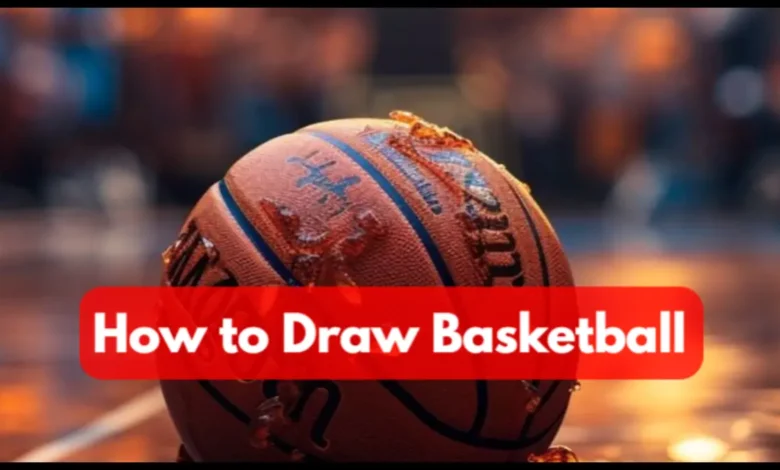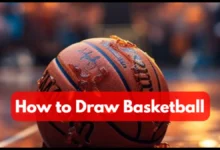Mastering the Art of Drawing:cul23ybyzfm= basketball: Tips and Techniques

Introduction to drawing:cul23ybyzfm= basketball
Welcome to the exciting world of basketball drawing! Whether you’re a seasoned artist or just starting, mastering the Art of capturing basketball’s dynamic energy and athleticism on paper can be a rewarding experience. This blog post will explore valuable tips and techniques to help you elevate your basketball drawings to new heights. So grab your pencils, sharpen your skills, and dive into the wonderful world of drawing:cul23ybyzfm= basketball!
The Importance of Practice and Observation
To master the Art of drawing, basketball, practice, and observation are vital ingredients. Consistent practice helps hone your skills and allows you to improve over time. The more you draw, the better you become at capturing the essence of basketball in your artwork.
Observation plays a crucial role in understanding the dynamics of basketball – from player movements to court perspectives. By closely observing games, players, and even photographs, you can enhance your ability to depict action and detail accurately in your drawings.
Combining practice and observation lets you develop an eye for proportions, angles, and details specific to basketball scenes. Embrace every opportunity to practice sketching different elements of basketball while paying attention to nuances that make each drawing unique.
Remember, Rome wasn’t built in a day! Dedication to practicing regularly and observing will undoubtedly elevate your basketball drawings to new heights.
Understanding Perspective and Proportions
When it comes to drawing:cul23ybyzfm= basketball, understanding perspective and proportions is critical. Perspective adds depth to your artwork, making it more realistic and engaging. Mastering perspective allows you to create the illusion of 3D space on a flat surface.
Proportions are also crucial in capturing the essence of basketball players and the game itself. Pay attention to the size relationships between different elements in your drawing – from the player’s body parts to the ball and hoop. This will ensure that your artwork looks accurate and dynamic.
Practice sketching different angles and viewpoints to improve your understanding of perspective. Experiment with foreshortening techniques to add an extra dimension to your drawings. Don’t be afraid to push yourself out of your comfort zone – this is where growth happens in artistry!
Basic Shading Techniques for Basketball Drawings
Shading is a crucial element in bringing your basketball drawings to life. You can add depth and dimension to your artwork by mastering basic shading techniques. Start by understanding light sources and how they interact with the basketball and its surroundings. Consider where the light comes from – natural sunlight or artificial lighting on the court.
Practice creating gradients by blending different shades to depict shadows and highlights on the basketball. Use hatching and cross-hatching methods to create texture and define shapes effectively—experiment with stippling for a unique effect that adds interest to your drawings.
Remember, practice makes perfect when it comes to shading techniques. Don’t be afraid to experiment with different styles until you find what works best for you. Adding shading will elevate your basketball drawings from flat images to dynamic pieces of Art that truly stand out!
Capturing Movement and Action in Drawings
When drawing:cul23ybyzfm= basketball, capturing movement and action is critical to bringing your artwork to life. To convey the dynamic energy of players on the court, focus on fluid lines and exaggerated poses that show motion in your drawings. Pay attention to details like body language, facial expressions, and the position of limbs to create a sense of intensity in your artwork.
Utilize different line weights to indicate speed and force in movements such as dribbling, shooting, or dunking. Experiment with hatching and cross-hatching techniques to add depth and dimension to your drawings. drawing:cul23ybyzfm= basketball Consider using bold strokes for fast actions like sprinting or jumping while incorporating softer lines for more subtle movements like passing or pivoting.
You can study how athletes move during gameplay by observing real games or watching videos of basketball matches. Practice sketching quick gesture drawings to capture the essence of motion before adding finer details. Remember that practice makes perfect when it comes to mastering movement in your basketball drawings!
Tips for Adding Details and Textures to Your Drawings
Small touches can make a big difference when it comes to adding details and textures to your basketball drawings. Start by focusing on the intricate lines of the basketball – the seams, patterns, and shine that give it its characteristic look. Pay close attention to how light interacts with the surface, creating highlights and shadows that bring depth to your drawing.
Experiment with different shading techniques to create texture in your artwork. Cross-hatching or stippling can mimic the roughness of a basketball’s surface while blending techniques can achieve smoother gradients for a more realistic effect. Don’t be afraid to layer different textures on each other – this can add complexity and visual interest to your piece.
Details like player jerseys, sneakers, and even the court background all contribute to the overall atmosphere of your drawing. Study these elements closely and faithfully recreate them in your artwork. Use fine lines for intricate designs and softer strokes for smoother surfaces like fabric or skin.
Remember that practice makes perfect when adding details and textures to your basketball drawings. The more you experiment with different techniques and materials, the more confident you’ll become in capturing every nuance of the game on paper.
Common Mistakes to Avoid When drawing:cul23ybyzfm= basketball
When it comes to drawing:cul23ybyzfm= basketball, beginners often make some common mistakes. One of the most frequent errors is neglecting to study the anatomy and proportions of the human body in motion. Artwork can appear stiff and unrealistic without a solid understanding of how limbs move and interact during a game.
Another mistake to avoid is overlooking the importance of perspective. Failing to depict foreshortening and depth accurately can result in flat-looking compositions that lack dynamism. It’s crucial to practice drawing from different angles to create more dynamic and engaging basketball illustrations.
Additionally, not paying attention to details such as facial expressions or ball textures can detract from the overall impact of your artwork. drawing:cul23ybyzfm= basketball Adding these small but essential elements can bring your basketball drawings to life.
Rushing through the process without taking time for observation and practice can hinder your progress. Remember, mastering any skill takes time and dedication – so be patient with yourself as you continue honing your craft!
Using References and Tools to Improve Your Skills
Utilizing references and tools can make a significant difference when improving your basketball drawing skills. References can provide valuable insights into the details of basketball players, equipment, and poses. By studying real-life photos or videos, drawing:cul23ybyzfm= basketball you can better understand the game’s dynamics and incorporate them into your drawings.
Tools such as different types of pencils, erasers, rulers, and blending stumps can help enhance the quality of your artwork. Experimenting with various tools allows you to explore different techniques and styles that may work best for capturing the essence of basketball in your drawings.
Online resources like tutorial videos, forums, and social media platforms dedicated to Art can also serve as valuable sources of inspiration and guidance. Engaging with other artists in these communities can offer constructive feedback on your work and motivate you to continue honing your skills.
Remember that continuous practice combined with utilizing references and tools is critical to mastering the Art of drawing:cul23ybyzfm= basketball. So grab your sketchbook, gather your supplies, and let your creativity flow!
Exploring Different Styles in Basketball Drawing
Exploring different styles can elevate your artwork when it comes to basketball drawing. One popular style is realistic rendering, where attention to detail and accuracy in proportions are critical. This style aims to capture the essence of the game with precision.
On the other hand, some artists prefer a more abstract approach, using bold lines and vibrant colors to convey energy and movement on paper. This style allows for creative interpretation and expression.
Mixing traditional techniques with digital Art is also a trend in basketball drawing. Utilizing digital tools can enhance your work by adding dynamic effects and textures that traditional methods may not achieve.
Experimenting with different styles keeps your creativity flowing and helps you find your unique voice as an artist. Don’t be afraid to step out of your comfort zone and push boundaries – that’s where artistic growth happens!
Conclusion: Keep Practicing and Enjoy
Mastering the Art of drawing:cul23ybyzfm= basketball takes time, dedication, and practice. By understanding the importance of observing details, practicing regularly, mastering perspective and proportions, utilizing shading techniques, capturing movement in your drawings, adding textures and details effectively, avoiding common mistakes, using references and tools wisely, and exploring different styles creatively – you can enhance your basketball drawing skills.
Remember that improvement comes with consistent effort. drawing:cul23ybyzfm= basketball Keep practicing to refine your techniques and enjoy the process along the way. Whether you’re a beginner or an experienced artist looking to elevate your skills in drawing basketballs – stay motivated and have fun creating!

